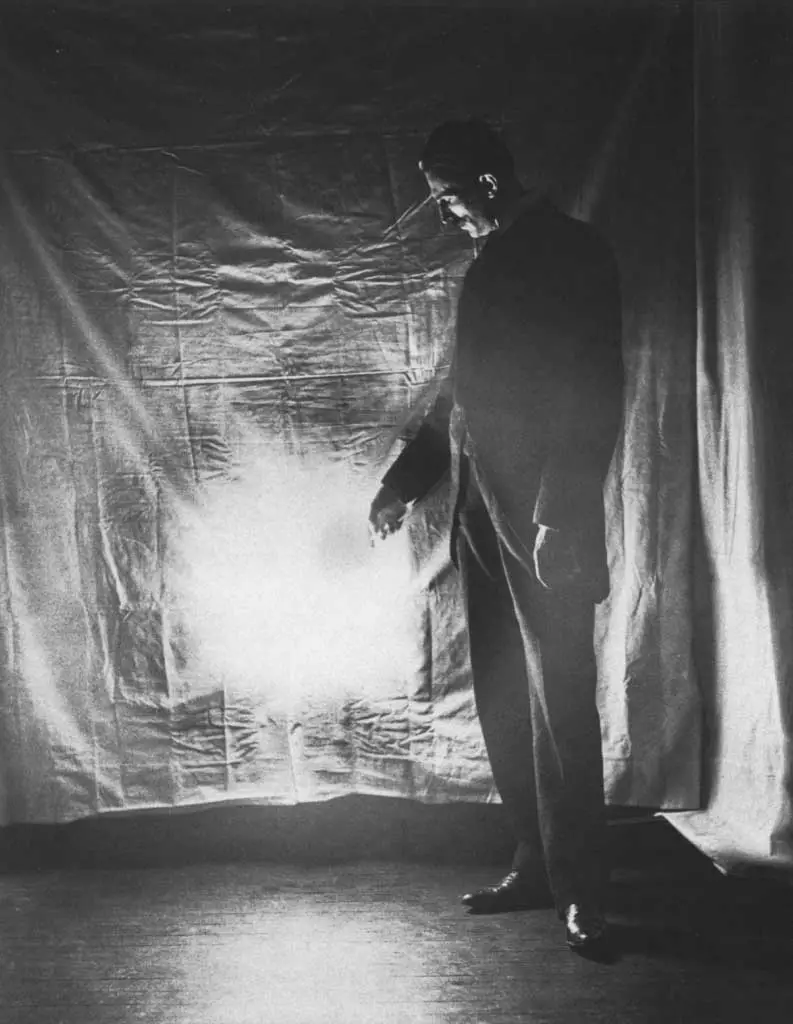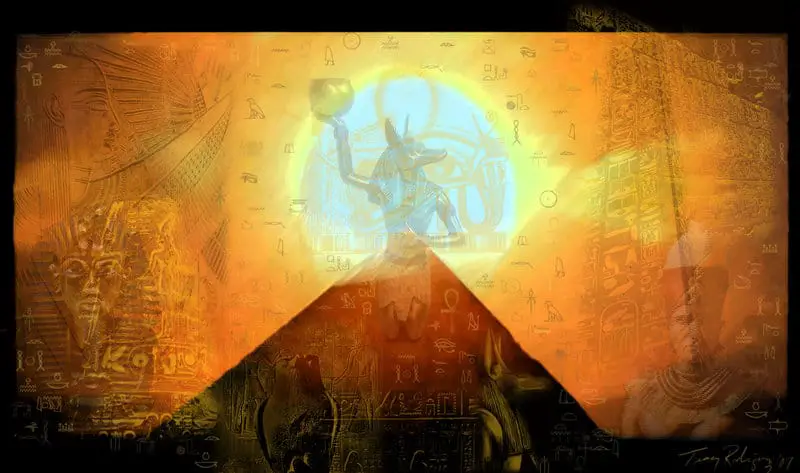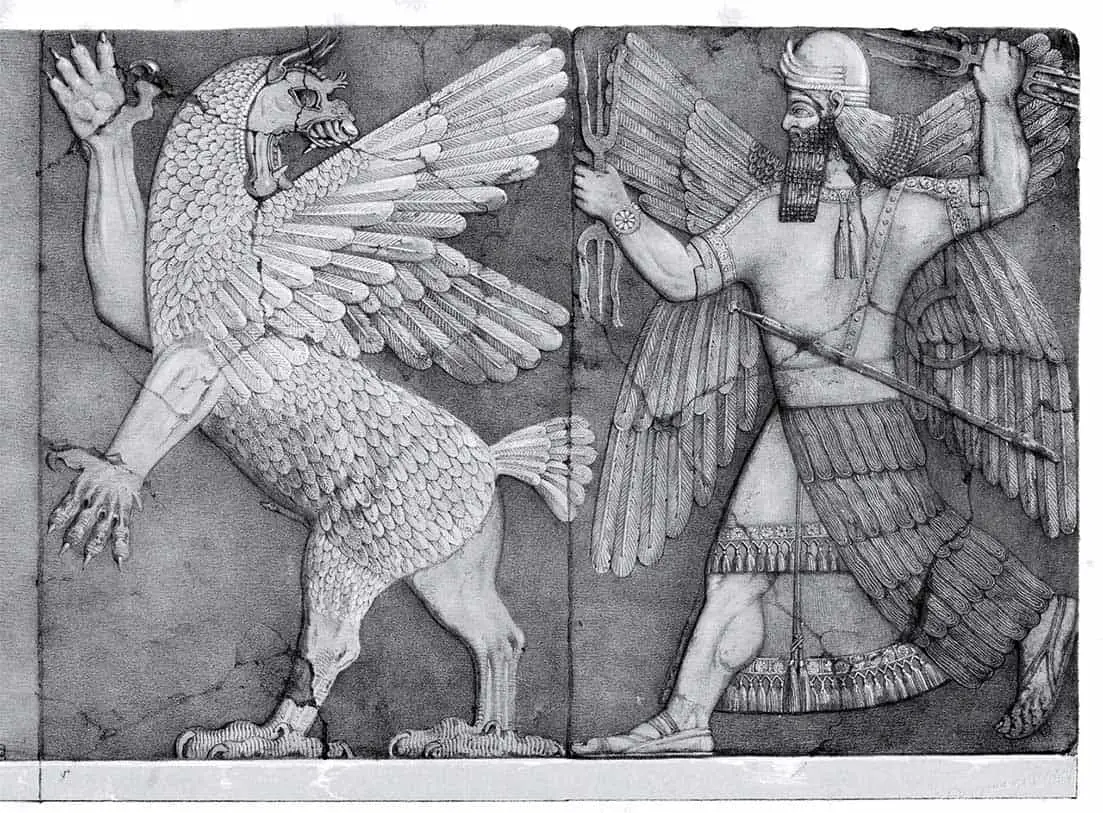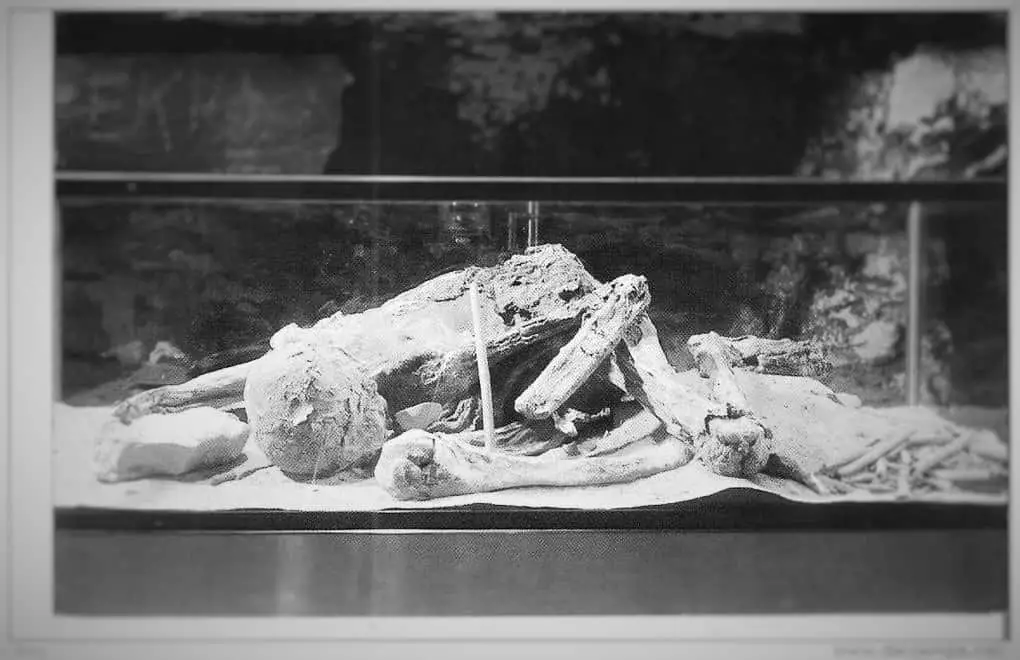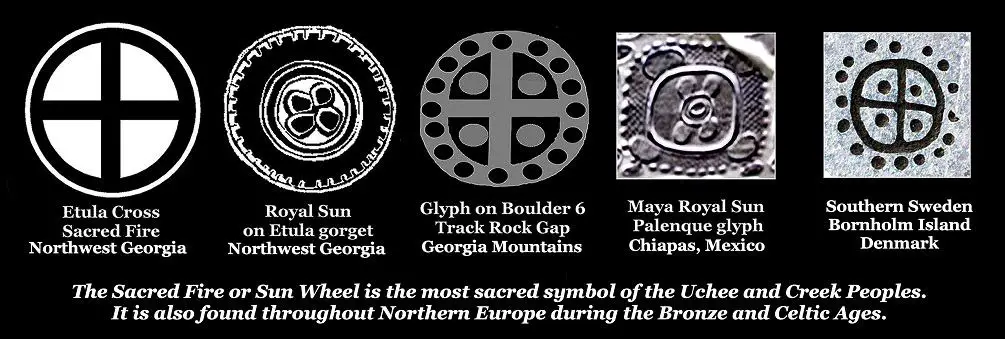
Scandinavian Bronze Age art is found on most of the famous petroglyphic boulders in the Georgia Gold Belt . . . a mountainous region containing the purest gold in the world. Most of Georgia’s petroglyphs are believed to be contemporary with the Scandinavian Bronze Age, although some are definitely Maya or Arawak in origin. Several of these symbols LATER became some of the earliest symbols in the Maya writing system. The most important symbols of the European Bronze Age such as the Sun Wheel, Great Sun (High King), Summer Solstice, Winter Solstice, Equinox, Solar Eclipse and phases of the moon are identical in Bronze Age Sweden and the writing system of Georgia’s Creek Indians.
Life is indeed a box of chocolates. On the morning after I graduated from Georgia Institute of Technology, I embarked on a 24-hour journey by jet and ferry to Landskrona, Sweden to work for its Stadsarkitektkontoret (City Architect’s Office). On the third day at work, my boss, Stadsarkitekt Gunnar Lydh, took me by boat to Ven Island in the Oresund Channel, which would be the location of my assigned project. Ven was at the center of Scandinavian Bronze Age civilization and contains petroglyphs in the vicinity of St. Ibbs Kyrka . . . which was also the location of my project.
I immediately noticed that all of the symbols on the boulders were also sacred symbols of the Creek Indians. I am Creek. This disturbing discovery has been at “the back of my head” in the decades since then. Even though I was mentored during my university years by two of the greatest archaeologists of the 20th century . . . Arthur Kelly of Georgia and Román Piña Chán, Director of the Museo Nacional de Antropologia de Mexico . . . prehistoric architecture remained an avocation for most of my career.
That situation changed in 2003 when six members of the National Council of the Muscogee-Creek Nation asked me to put aside my interest in Mesoamerica for awhile to concentrate on our own architectural heritage. I carried out a series of projects for the next five years, which intensively researched the architectural, urban planning and cultural history of the Creek People.
The whole question of ancient trans-Atlantic contacts and immigration is so filled with charlatans and speculations that I intentionally avoided discussion of the similarity between Scandinavian Bronze Age and Creek art until February 2017. Then it was unavoidable.

People of One Fire
The People of One Fire was the original name of the “Creek Indian Confederacy.” It is now an alliance of Muskogean professionals and professors, which was formed in 2006, to put the study of Muskogean cultural history back under the control of the descendants of the people, who created in those ancient towns, mounds, and artifacts.
We were outraged that Georgia archaeologists and state bureaucrats were literally being bribed by the casino money of North Carolina Cherokees to distort our history, create ludicrous interpretations of our town sites, etc. to fit the new myth of a Cherokee master race, who once occupied most of North America and built most of the mounds. The original Georgia History textbook, used in public schools, emphasized the key role that the Creek Indians had in fostering the success of the Colony of Georgia and that many Creeks and colonists intermarried. The Cherokees were only mentioned briefly since they had no role in the colonial history of the Georgia and were only in Georgia for one generation after it became a state. 2006 (new) Georgia History book has four chapters on the Cherokees and 1/2 chapter on the Creeks.
Cherokee Heritage Trails, a book published by UNC-Chapel Hill and co-authored by an anthropology professor there, literally states that the Cherokees were the first people to cultivate corn, beans, squash, and sunflowers, plus that they built all the mounds in a seven-state area of the Southeast. An expensive documentary film, produced by the Eastern Band of Cherokees for PBS, states, “The Cherokees were the first people in the Americas and once occupied all of the Americas. They were the ancestors of the Aztecs and Mayas.” The Eastern Band of Cherokees Cultural Preservation Office even had the audacity to use a gorget, excavated from Mound C at Etowah Mounds, Georgia by archaeologist Warren K. Moorehead, as their official logo.
The truth that all indigenous Southeastern tribes know is that the Cherokees were a small tribe of Northern hunters-gatherers living in caves, who became the dominant players in the Native American slave trade. The Creeks are the only tribe in the Southeast, whose name for the Cherokees does not mean “Cave Dwellers.” When given firearms by Virginia, the ancestors of the Cherokees moved southward in the late 1600s and wiped out all our towns in Tennessee and western North Carolina. “Cherokee” was a Muskogean name, given them by the British. They are not even mentioned on any European map until 1715.
The Tugaloo Stone
One of POOF’s current projects is the creation of a GIS map and digital files on all the stone structure and petroglyph sites in the Southeastern United States. These sites are particularly concentrated in North Georgia . . . more so than any other part of the United States. The region also contains at least 12 stone-walled agricultural terrace complexes like what one sees in the Maya Highlands.
The Tugaloo Stone is a quarried chunk of metamorphosed igneous rock, which has sat behind the Travelers Rest Inn near Toccoa, GA for at least 230 years. Prior to that it was a half mile away on the shore of the Tugaloo River, which is a tributary of the Savannah River. For the past six decades, Travelers Rest has been a state historic site.
The stone is covered with engravings, yet has generally been ignored by Georgia’s archaeologists. Archaeologist Terri Smith did do a sketch of the stone in 1979, but did not publish an interpretation. What few comments one can find about the stone from Georgia archaeologists describe it as “Cherokee doodling of unknown meaning.” Actually, these contemporary archaeologists forgot that a very famous 20th century archaeologist, Joseph Caldwell, determined that Tugaloo was a very important proto-Creek town until a little after 1700 AD, when it was sacked and burned by Cherokee slave raiders.
After returning home from digitally photographing the Tugaloo Stone, I examined the images with a program than enhances old maps and texts so they are legible. I saw several more details that Smith’s field sketch missed. I don’t know why she didn’t use a camera to document the stone rather than field sketch it. Then I rotated the images 180 degrees from whence they have been viewed for 230 years.
OMG! Three Bronze Age ships and dozens of Bronze Age astronomical symbols were clearly visible. Just to be sure, I sent my photos to several Bronze Age experts in Europe. All confirmed my initial interpretation, but several assumed that the stone had been stolen by an American tourist and smuggled to Georgia. They demanded that it be immediately returned to either Sweden or Denmark. They were astounded when I informed them that the stone was found in the late 1780s in the ruins of an ancient Mound Builder town in Georgia.
Since I still remember some Swedish, I could search online with Scandinavian keywords. This made possible the discovery of many more astonishing connections between my Creek-Uchee cultural heritage and Bronze Age Scandinavia. The most mind-boggling discovery online were the petroglyphs on a rock face in Nyköpping, Sweden, near the Baltic Sea (Upper left section of composite images above).
The Nyköpping glyphs are quite similar in appearance to early Maya glyphs, but date from around 2,000 BC. The Maya writing system appeared around 250 BC. However, many of these symbols appear on the Track Rock Petroglyphs in the Georgia Mountains, which seem to date from around 1200-1000 BC . . . perhaps they are much older.
Note the Nyköpping glyph, identified with a white arrow. This is the cartouche of a High King in Bronze Age Scandinavia, Proto-Creek Moundbuilder towns in Georgia and in the Maya writing system. Both the Creek and Maya names for this symbol translate as “Great Sun”. Undoubtedly, that was also the title in Bronze Age Scandinavia, since the symbol is derived from the Scandinavian and later, Celtic symbol for the sun . . . a cross within a circle. The Creeks and Uchee call this cross-circle, the sacred fire.
Many of the Nyköpping glyphs are found on Boulder Six of the Track Rock Gap Petroglyphs in Georgia. Above them are four Itza Maya glyphs which mean, Hene Mako ~ Ahau Kukulkan or Great Sun ~ Lord Quetzal-Serpent. Would you believe that the Georgia Council of Professional Archaeologists endorsed a report, which interpreted the Track Rock Petroglyphs as . . . “graffiti by bored Cherokee hunters” ??? Track Rock Gap was in Creek territory until a treaty signed in 1785. And you wonder why Georgia’s Native Americans are so appalled by the current fossilization of archaeology in that state?

How could this be?
Since February 2017, I have tried to learn all I could about the Bronze Age in Scandinavia and Ireland. The Georgia Mountains also contain petroglyphic boulders identical to those on the Dingle Peninsula in County Kerry, Ireland. Major assistance was provided by a graduate assistant at Lund University’s Department of Archaeology and Ancient History . . . near Landskrona. She provided me with a chart, which provides the meanings of most of Sweden’s Bronze Age symbols. This enabled me to be the first person to be able to translate many of Georgia’s petroglyphs.
How could the same petroglyphs have the same meaning on both sides of the Atlantic? How did petroglyphs in the Georgia Mountains become the earliest glyphs in the Olmec-Maya writing system a thousand years later? The answers right now are in the realm of speculation.
This is what we do know. Georgia Uchee descendants from the Savannah River Basin show unexpectedly high levels of Sami (Lapp), Northwest Asian, Black Irish (pre-Gaelic), Basque and Scandinavian DNA test markers, but unexpectedly low levels of typical Amerindian DNA test markers. In the past, these non-East Asiatic DNA markers were assumed to have been acquired by marriage with white colonists in recent times. However, a closer analysis of some test subjects strongly suggests that the admixture occurred in ancient times.
The Uchee (Yuchi) People of Georgia have consistently claimed to have crossed the Atlantic from the “Home of Sun” and first settled on the Lower Savannah River. When they arrived, there was no one living in the region, but they could see the shell middens, shell rings and sand mounds of an earlier people.
The Creeks called the Uchee, the Water People. The Uchee prefer to call themselves, Tsoyaha, which means “Children of the Sun.” Uchee means the same and is pronounced the same as the Pre-Gaelic Irish word for water, uisce. The Muskogee Creek word for water is ue. My ancestors, the Itzate Creeks, used the Itza Maya word for water. However, I am also part Savannah River Uchee.
Southeast of Downtown Savannah is a cluster of very old and very large mounds, plus a 5,500-year-old man-made port and mound. Most of the mounds date from around 2300 BC to 800 BC. However, Louisiana archaeologist, William C. Haag, radiocarbon dated the lowest level of the Bilbo Mound at 3,545 BC . . . making it the oldest architecture in North America. The Savannah River Basin also contains the oldest pottery in the Americas, north of the Amazon Basin – c. 2400 BC.
The reason that you have not heard about the Bilbo Mound and the man-made port within which it sits, is that most Georgia archaeologists could not believe that anything built by their Indians could be so old. Savannah archaeologist, Antonio Waring, watched Haag’s work and knew the date to be accurate. He tried to get the word out, but the Old Guard of archaeology squelched it. Haag moved back to Louisiana and soon discovered the Poverty Point platform village. Much of the rest of his life was devoted to Poverty Point.
There are obviously many unanswered questions about the Scandinavian-Georgia Connection. Nevertheless, one cannot obtain answers unless one asks questions. Right now . . . the only people asking questions on this side of the Atlantic Ocean appears to be Georgia’s Native Americans.

